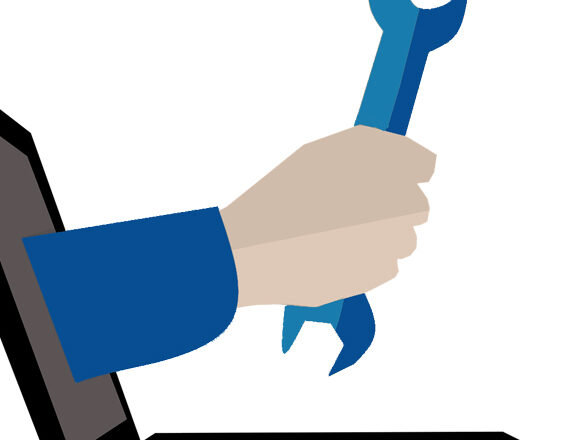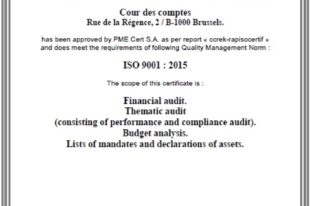Using Innovative Tools, Techniques in Local Government Auditing

by Baiba Bebre, State Auditor-Lawyer, State Audit Office of Latvia (Baiba.Bebre@lrvk.gov.lv)
Introduction
Supreme Audit Institutions (SAIs) are constantly looking for ways to strengthen audit capacity and effectively disseminate audit results to stakeholders. What steps can SAIs take to increase added value of audits and decrease risks of bad governance? Some solutions include incorporating new technology, improving and adapting well-known techniques and tools, and fostering visualization of, and open access to, information.
Capacity building and sharing audit results are especially important in the area of local government, where a large number of municipalities and municipal institutions often pose challenges to SAI limited resources. As the level closest to the people, local governments provide various essential services to residents. At the same time, local governments often face difficulties in terms of funding constraints, shifting demographics, economic and community development and service delivery.
The State Audit Office (SAO) of Latvia’s mandate includes financial, compliance and performance audits in local governments, requiring specific consideration and adapting accordingly to maximize the audit impact. Since audits often highlight similar problems and shortcomings in managing municipal resources and property, it has been crucial to look for new, innovative ways to share and promote audit findings.
Benchmarking
Benchmarking is an important element of audit work. In the field of local government, the SAO of Latvia typically conducts systemic audits in up to 12 municipalities simultaneously. This allows comparing local governments not only against a best practice model but also among themselves. To visualize benchmarking results in a reader-friendly way, the SAO began using the “traffic light” approach, wherein comparisons are presented using color codes. A detailed evaluation is included in the audit report, and the visualization is presented in the summary and media materials.
Open Access to Information
Improving access to public sector information provides numerous benefits, particularly as increased transparency and efficiency within government (both state and local) can be quite advantageous. During audits, SAIs often accumulate and process potentially useful information for various stakeholders, but this information is not readily accessible. To enhance information accessibility, these initial information files could be made public if they do not contain classified or personal information. The SAO has adopted this notion in its Strategy 2018-2021—ensuring stakeholder access to relevant, useful files that have been compiled and created during audits.
The SAO frequently analyzes information from the audited entities (usually up to 11-12 municipalities in one audit) during local government compliance and performance audits. The SAO also gathers information on other local governments to better understand the bigger picture. As a result, information gathered during these audits can be quite extensive and cover the entire country. However, until now, these data sets were not publicly available.
In line with the SAO’s new strategy, the first information set was published in February 2018 pertaining to a very delicate matter—cemetery management—which the SAO discovered is governed solely by municipal by-laws.
To grasp the nationwide situation, the SAO surveyed all Latvian municipalities, and the results showed an extremely fragmented and disparate situation. The rules and payments for acquiring and maintaining a cemetery plot vary greatly among local governments. Moreover, although by-laws and price lists pertaining to the use of cemeteries are public documents, it is often exceedingly hard (and sometimes impossible) to find this information on official municipality websites and information stands. Therefore, the SAO published the relevant information for all 119 of Latvia’s local governments. The benefits of doing so include allowing for public scrutiny of the information and providing municipalities with data to compare, analyze and adopt best practices.
Self-assessment Tools
Auditing every municipal institution and municipally-owned enterprise would be daunting and resource intensive. However, it is important to spread audit findings and best practices as widely as possible. While press conferences, seminars and webinars present traditional channels for disseminating information, it is also possible to actively engage local governments in assessing their own situation.
The SAO offers self-assessment questionnaires upon concluding each local government audit. These questionnaires, freely available for download on the SAO’s website, provide for anonymous responses. The first self-assessment form was developed for the audit on cemetery management using queries based on the audit criteria. For each question, a course of action was also suggested in case of non-compliance or partial compliance. The SAO tested the questionnaire in select municipalities (on a voluntary basis) to provide feedback on the tool’s clarity and usefulness prior to official implementation.
Process Analysis—Incorporating Quality Management
In 2016, the SAO evaluated whether local governments provided resident services at reasonable costs. During the compliance and performance audit, the SAO also assessed whether municipal services were client-oriented and whether the resources and organizational structures were adjusted to this task.
After appraising the best audit approach, the SAO utilized process analysis to evaluate municipal services, where experts examined each phase in service provision, identified any unnecessary steps and calculated the costs. Process analysis allowed for the attainment of comparable information, useful for benchmarking and organizing similar tasks in various local governments.
For example, by comparing similarly sized local government accounting process organizations, experts concluded that centralizing accounting and eliminating excess steps at a particular local government could result in approximately 43,200 euro in cost savings annually. The local government implemented the SAO’s recommendation and found that accounting process centralization and improvement would actually save more—at least 131,000 euro per year.
Discussion Papers
Because SAIs carry out numerous audits every year, they are in an excellent position to discover systemic problems and stimulate dialogue on necessary improvements. Discussion papers constitute a helpful tool to consolidate conclusions of various audits in a concise format that can be used to highlight problem areas and facilitate debate.
In 2016, the SAO began preparing discussion papers. These papers, based on audit findings in areas where shortcomings are lasting, systemic and not easily resolved by the audited entities alone, aim to introduce suggestions for improvement and facilitate discussions among audited entities and stakeholders.
The SAO published a discussion paper on rational operation and development of local governments in December 2017 that summarized examples, conclusions and possible solutions from various local government audits completed over the last five years. The added benefit of strategically publishing the paper during a discussion of administrative reform greatly contributed to an ongoing debate.
Introducing new approaches and techniques in local government auditing has been a challenging yet immensely rewarding process. By improving the impact of audits, SAIs can steadily move closer to better public governance.
To learn more about the “traffic light” approach to benchmarking and SAO Latvia’s survey design, visit the SAO’s webpage.





